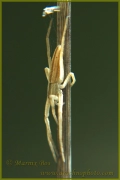The Philodromidae have a fairly flat and slim body and sideways orientated legs, with pair of legs II the longest. In contrast to the Thomisidae pair of legs IV is not remarkably shorter than the first. They are free hunting and actively approach a prey that is in the vicinity, without waiting until the prey is within immediate reach. About 80 species occur in Europe.
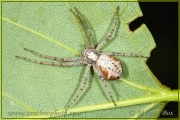
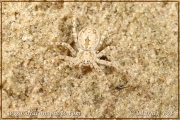
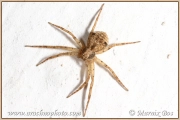
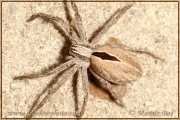
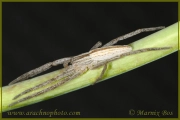
Genus Philodromus
The spiders of this genus often lie quietly and well camouflaged in their environment, waiting for a prey. However, they can instantaneously walk up to a prey or run off when disturbed. The camouflage sometimes is astonishing, partly because some species can adapt their body-colour to the surroundings.
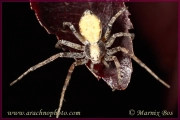
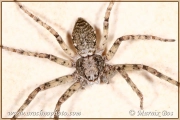
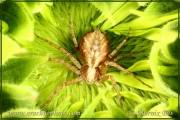
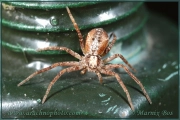
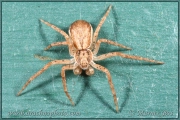
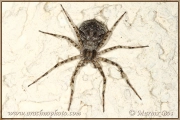
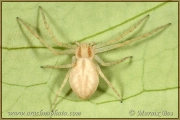
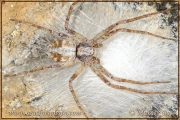
Genus Pulchellodromus
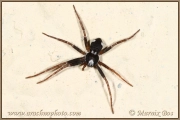
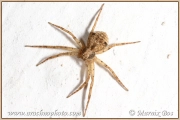
Genus Rhysodromus
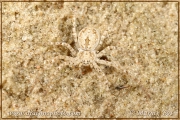
Genus Thanatus
These spiders are less flattened than those of the genus Philodromus. The abdomen is elongated and in all species it has a distinct cardiac mark. The spiders live on the ground and between low vegetation. Some species occur in a sandy area, while others occur in a humid area.
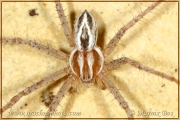
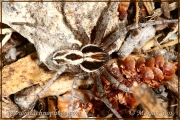
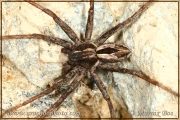
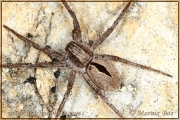
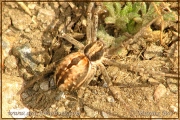
Genus Tibellus
This is a different genus within the family. The spiders are very elongated and have a round carapace and long legs. They occur mainly in long grasses and because of their stretched position they remind of the Tetragnathidae. The difference between these spiders is, however, that the position of the eyes is not the same, the chelicerae are of normal size and they never have a metallic shine. At rest, they take a typical, straight posture with pair of legs I and II stretched forward, pair of legs IV stretched backward and pair of legs III clamped to the grass stalk.
